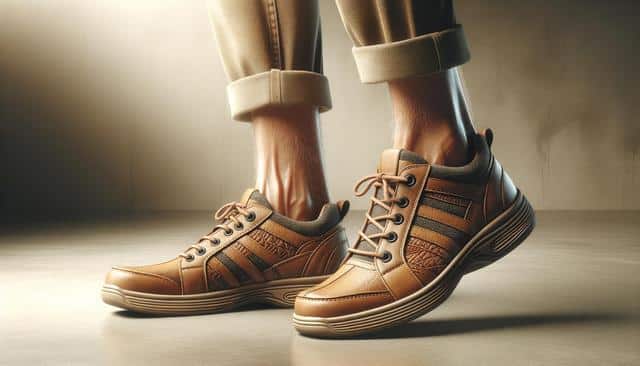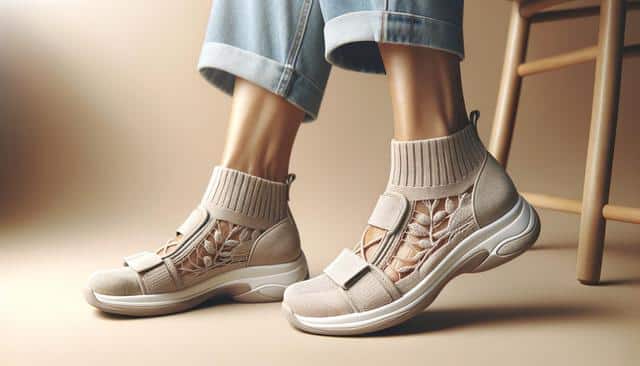
Comfortable Footwear Solutions for Mature Feet
Understanding the Needs of Mature Feet
With age, our feet undergo several physiological changes that can affect mobility and comfort. These changes might include loss of fat padding, decreased arch support, reduced flexibility, and the development of conditions such as bunions, arthritis, or plantar fasciitis. As a result, mature feet require footwear that caters specifically to these evolving needs. Prioritizing comfort, stability, and support becomes not just a preference but a necessity for maintaining an active lifestyle.
Footwear designed for mature feet typically includes features that accommodate these changes. For example, cushioned soles help absorb shock from walking on hard surfaces, while wide toe boxes prevent pressure on sensitive areas. In addition, shoes with adjustable straps or laces allow for a customizable fit, which is especially helpful for those experiencing swelling or other foot irregularities.
It’s also important to consider professional input. A visit to a podiatrist can provide valuable insights into specific foot issues and recommend features to look for in footwear. Investing in the right pair of shoes can significantly improve daily comfort and reduce the risk of falls or injuries.
Key Features to Look for in Comfortable Footwear
When shopping for footwear suited for older adults, certain features can make a significant difference in overall comfort and foot health. These design elements are not just about comfort but also about enhancing stability and preventing discomfort from prolonged wear.
Important features to look for include:
- Arch support: Helps distribute weight evenly and reduces strain on the feet.
- Shock-absorbing soles: Minimize impact on joints and bones, especially during walking.
- Wide toe box: Prevents crowding of the toes and accommodates deformities like bunions.
- Lightweight materials: Reduce fatigue and make movement easier.
- Non-slip outsoles: Improve grip and reduce the risk of slipping.
Footwear with these qualities not only enhances comfort but also supports foot health over time. Many brands now offer options that combine these technical features with stylish designs, so there’s no need to compromise appearance for comfort.
Daily Footwear for Home and Leisure
Comfortable footwear isn’t just for outings. Wearing supportive shoes at home also plays a crucial role in maintaining foot health. Many people tend to go barefoot or wear slippers indoors, which might not provide the necessary support. This can lead to strain and discomfort over time, especially for feet that are already sensitive.
For home use, consider the following options:
- Supportive house shoes with arch support and cushioned soles
- Non-slip indoor footwear to prevent accidents on smooth floors
- Adjustable-fit slippers for ease of use and comfort throughout the day
Footwear for leisure should prioritize ease of wear, breathability, and sufficient cushioning. Look for materials that allow airflow and prevent overheating, particularly during warmer seasons. If walking is part of your daily routine, even indoors, wearing structured footwear can significantly improve comfort and mobility.
Choosing Footwear for Outdoor Activities
Outdoor footwear for mature feet should balance durability, support, and weather-appropriate features. Whether going for a stroll in the park or running errands, outdoor shoes need to offer reliable traction, weather resistance, and extended comfort for longer periods of wear.
Key considerations for outdoor footwear include:
- Water-resistant or waterproof materials for all-weather use
- Padded collars and tongues to prevent chafing
- Firm heel counters to enhance stability
- Flexible midsoles that adapt to the natural foot movement
Walking shoes and casual sneakers with orthopedic footbeds are popular choices. They offer a good mix of comfort and functionality without being overly heavy. If you often walk on uneven terrain, consider shoes with reinforced soles and ankle support to protect against minor injuries.
Tips for Ensuring the Right Fit
Even the most well-designed footwear can fall short if it doesn’t fit properly. A poor fit can lead to blisters, calluses, and overall discomfort, defeating the purpose of choosing supportive shoes. For mature feet, getting the right fit may require more attention to detail than before.
Here are some practical tips for ensuring footwear fits well:
- Try shoes later in the day when feet are slightly swollen for a more accurate fit
- Wear the type of socks you usually wear with the shoes when trying them on
- Ensure there is about a half-inch of space between your longest toe and the front of the shoe
- Check for adequate width and depth, especially if you use orthotics or have foot deformities
- Walk around in the shoes indoors before committing to extended use
Some people find that their foot size changes with age, so measuring both feet before purchasing new shoes is a good habit. Remember that comfort should be immediate—shoes shouldn’t require a “break-in” period to feel right. Prioritizing fit can prevent a host of issues and extend the usability of your footwear.
Conclusion: Step Into Comfort with Confidence
Choosing comfortable footwear for mature feet is an investment in both health and quality of life. As feet change over time, adapting your footwear to meet new needs can make everyday activities more enjoyable and less painful. By focusing on the right features, fit, and purpose-based design, it’s possible to find shoes that support your lifestyle while catering to comfort and mobility. Whether at home or outdoors, the right pair of shoes can help maintain independence, reduce discomfort, and support long-term foot health.


